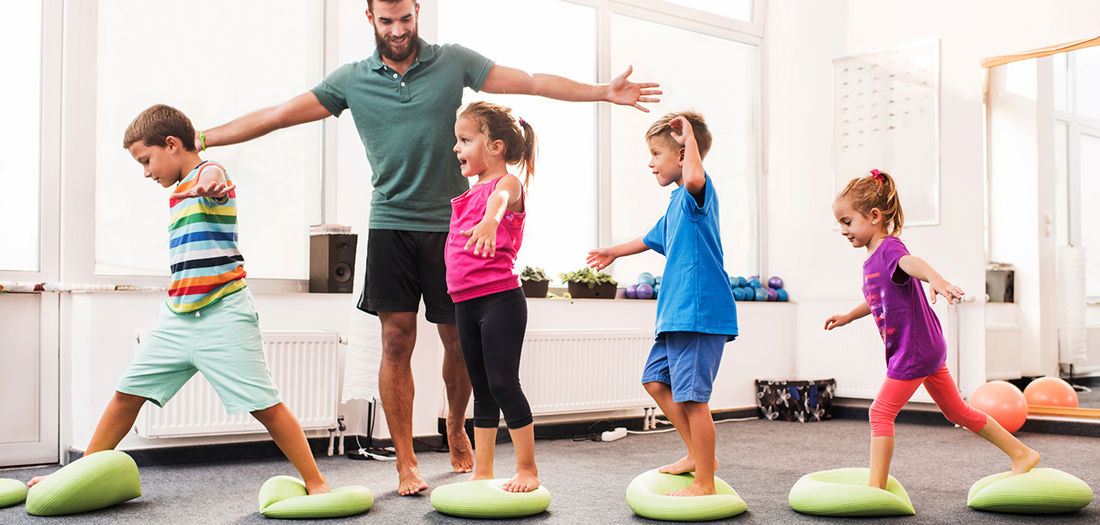“Complexity is the enemy of execution.” —Tony Robbins
This quote is a great blueprint for life. We can always make things MORE complicated, but do we need to?
After more than 15 years of experience with personal training, I’ve discovered that designing fitness programs follows the same logic. At the end of the day, our client’s needs are varied, but pretty simple, and the way we program should reflect this.
As a health and fitness professional, you know that your clients’ motivation and compliance falls somewhere on a spectrum from the ones who “do everything you say both in and out of the gym with ample focus and intensity” (extremely rare), to those who “had a bottle of wine for lunch so they need to reschedule.”
An overwhelming majority of long-term clients typically fall somewhere in the middle of this spectrum. These are clients who view your work with them as a positive step in the right direction in their lives—not a final destination. Their focus and intensity in executing a program you design will reflect this attitude.
No matter where they fall on the spectrum, your clients’ ultimate success in losing weight and/or developing long-term healthy habits don’t lie in what you want them to do. It is grounded in helping them feel willing, confident and capable of following the programs you’ve designed for them.
While hard-charging, compliant clients (again, very rare) show up with the willingness and possess the confidence to have their capabilities constantly challenged, your “bread-and-butter” clients often get hung up on the “willing” part.
In this case, the focus of your programs should be to deconstruct the process of success. Make your clients feel capable so they have the confidence to willingly participate. But exactly how do you do this?
The first rule of program design for most clients is to realize that they don’t care about the eastern Bulgarian research you spent all night weaving into their programs. They just spent 12 hours sitting in a chair toxifying themselves with stress. They just want to move! And it’s your job to recommend movement that improves their biomechanics, physiology and, most importantly, psychology.
To make program design fast and simple for you and effective for them, keep it simple. Here are three steps to quickly creating simple programs that deliver tremendous results, while helping clients feel more confident and competent.
Step 1: Create your simplified exercise “database.”

To make smart programming fast and effective, create a list of what you believe are the most foundational exercises (the simpler the movement, the better) for reinforcing the most common human movement patterns:
- Examples: bench press, push-ups, overhead press (horizontal and vertical, one and two arm)
- Examples: pull-ups, rows (horizontal and vertical, one and two arm)
- Quad dominant. Examples: squat, lunge (one and two leg)
- Hip dominant. Examples: deadlift, hip bridges (standing and supine, one and two leg)
- Examples: chops, planks, back extensions (rotation and anti-rotation, flexion and extension, stability)
- Sagittal (lateral) plane. Examples: lateral lunges, shuffles, lateral shoulder raises (upper and lower body)
- Examples: biceps curls, triceps extensions, crunches (single-joint exercises)
- Special mobility. These exercises address prevention and/or management of movement pathologies at specific joints, and can be used to address the individual needs of clients either during the warm-up or the “core” part of a program.
- Heart rate. Considering that the goal of an exercise may be to simply increase heart rate, write down what you feel are the most fundamental exercises for this. Examples: running, jumping jacks, jump rope, skipping
Now review the exercises you feel are foundational. Have your clients mastered them? If not, why introduce unending variation and escalated intensity?
A simpler, more effective way to help your clients feel competent and confident is to pair down the database of exercises you use and start prioritizing mastery over variety. When you shift your focus to mastery, you become a better coach and your clients learn to do things well, which will naturally increase their enjoyment.
For variety, provide simple variations, such as one-arm vs. two-arm, horizontal vs. vertical, different movement cadences, etc. This is in contrast to mulling over thousands of different exercises, types of equipment and other complex variables that ultimately frustrate clients.
Step 2. Identify and prioritize the “un-sitting” exercises.

You know that your clients spend most of their lives sitting, which leads to a wide array of general and specific aches, pains and physical limitations. These all stand in a client’s way of developing capability and confidence with movement.
How do you address this from a program standpoint to help clients start moving better and reducing their pain?
Un-sit them!
Consider the biomechanical patterns of sitting. A majority of exercises in a program should facilitate the opposite. The easiest way to start effective exercise selection is to limit exercises with the word “seated” or “sit” in them.
- Which exercises from your list are opposite to hip, lumbar, thoracic and cervical flexion (e.g., extension)?
- Which exercises on your list counteract elevated traps and anteriorly shifted, horizontally adducted shoulders (e.g., scapular depression and retraction anyone)?
In a daily program, attempt to recommend two to three exercises that counteract the sitting posture for every one exercise that doesn’t.
Step 3. Strategically pair exercises together to create an effective, efficient program.

It’s now time to put your simple, foundational exercises together in warm-up, core program and “finisher” pairings that counteract sitting, improve strength, mobility and fitness, and create competent, confident clients.
For the warm-up, write down eight different classifications of movement patterns from the ones you created earlier; place them in any order (remove the “accessory” category for the warm-up and core program). Write down one body-weight version of an exercise for each movement classification, prioritizing the exercises you identified as “un-sitting” exercises.
Have you clients perform each exercise for 30 seconds, then quickly transition to the next. This should take a little more than five minutes to warm up the entire body (e.g., 30 seconds each exercise, 10 seconds rest in between).
- Pushing: 4-point crawls
- Special mobility: Can openers
- Heart rate: Skips
- Pulling: Prone swimmers
- Quad dominant: Walking lunge and reach
- Trunk: Plank
- Hip dominant: Standing hip hinges
- Sagittal (lateral) plane: Shuffles
Next, write down one of your “heart-rate” activities to begin the workout. This should encompass another one to two minutes with multiple sets, reps and rest time. A simple go-to ratio for exercise time is 30 seconds of work combined with 10 to 30 seconds of recovery (e.g., perform two sets of mountain climbers, with 30 seconds of work combined with 10 seconds of rest in between sets).
For the “core” part of your programming, pair exercises from the different movement classifications together to create supersets. For example, chose an exercise from “pushing” and pair it with an exercise from one of the other categories.
Create three of these supersets, making sure that by the end of the workout, all major movement patterns have been included, either in the warm-up, core or “finisher” portions of your program.
For sets and reps, aim for three to four sets of eight to 12 reps or 30 to 40 seconds of time (for most exercises). Don’t be afraid to slow things down (more rest) and make exercises simpler, even at the cost of keeping the heart rate up. The most effective form of an exercise is the proper execution—not the fastest. Program results will reflect this.
To keep the heart rate elevated, include a “heart rate” exercise between each superset.
Sample core program:
Complete three sets of each pairing before moving to the next. Complete 10 reps (3 seconds down, 1 second up) of each exercise with a 10-second rest during transitions between exercises; rest for 30 seconds while transitioning between each pairing.
- (Pushing) Push-Ups—(Quad dominant) Squats
- (Heart rate) Jumping Jacks (2x30 seconds with 10 seconds rest in between)
- (Pulling) Horizontal Row (off of barbell or TRX)—(Hip dominant) Single-leg RDLs
- (Heart rate) Skips (2x30 seconds with 10 seconds rest in between)
- (Trunk) Standing chops—(Sagittal plane) Lateral lunges
Keep the “anti-sitting” exercises in mind, but don’t worry about trying to come up with some “ideal” exercise. There are no magic exercises—only ones that make sense and allow clients an opportunity to achieve movement mastery.
Once you have completed the “core” portion of the program, finish with a combination of four to five heart-rate and accessory exercises in a circuit with extremely limited rest. This is a “finisher” circuit.
These exercises are ideally done for time (e.g. 30 seconds of work, 10 seconds of rest). This is the part of the program to include the exercises that clients like (isolation exercises like abs and arms), but that don’t necessarily contribute to overall function. Have clients complete two sets of the circuit, 30 seconds per exercise, with 10 seconds of rest between exercises and 30 seconds of rest between circuits.
- (Heart rate) Burpees
- (Accessory) Biceps curls
- (Heart rate) Running
- (Accessory) Ab cross-crunches
- (Heart rate) No-arm get-ups
Follow the finisher with a short breathing exercise to lower the heart rate, and then finish with a static stretch, highlighting belly breathing.
To make creating these programs even simpler, create a template for yourself with the different movement classifications written in for the warm-up, core program and finishers.
Refer to your database of exercises to quickly fill out the template for daily and weekly programs. Maintain relative program consistency for about four weeks and then change exercises, sets, reps, etc.
This approach means no more stressing over “calorie burn.” Now you can focus on creating strong, mobile, fit clients who are confident and capable with movement, so they are willing to do it more. Going through these program steps will also help you spend less time programming and more time changing clients’ lives.
 by
by 








 by
by